Temple Trails of Angkor
As travelers navigate the labyrinthine pathways of the Temple Trails of Angkor, a sense of awe and wonder envelops them as they witness the silent whispers of ancient history echoing through the sacred stones.
Each temple holds secrets waiting to be unveiled, mysteries that have puzzled historians and archaeologists for centuries. The allure of Angkor’s temples goes beyond mere architectural grandeur; it delves into the very soul of a civilization lost in time.
But what truly lies beneath the surface of these majestic structures remains a tantalizing enigma, drawing visitors deeper into the enigmatic world of Angkor’s Temple Trails.
Key Points
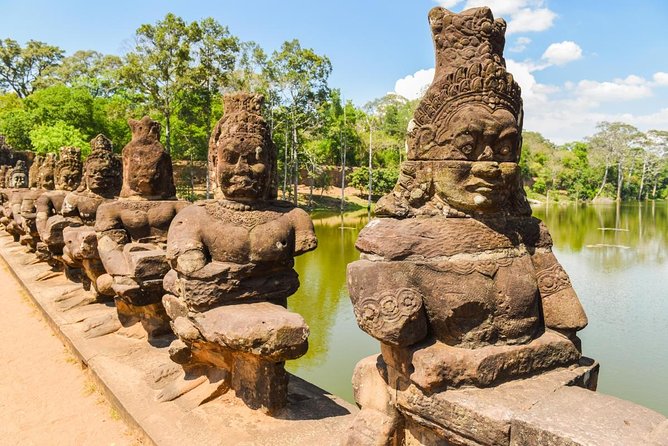
- Angkor Wat embodies grandeur and spiritual resonance, symbolizing Mount Meru.
- Bayon Temple’s serene faces and detailed reliefs reflect Khmer spirituality.
- Ta Prohm showcases nature’s reclaim with intertwining tree roots.
- Banteay Srei’s intricate pink sandstone carvings depict Hindu mythological scenes.
Angkor Wat: Iconic Temple Complex

Embodying grandeur and spiritual resonance, Angkor Wat stands as an iconic testament to ancient architectural mastery in Southeast Asia. Exploring its architecture unveils intricate bas-reliefs, towering spires, and vast courtyards that reflect the historical and cultural significance of the Khmer Empire.
The temple complex symbolizes Mount Meru, the home of the gods in Hindu mythology, showcasing a fusion of spiritual beliefs and artistic expression. Visitors are captivated by the sheer size and intricate design of Angkor Wat, a UNESCO World Heritage site that continues to inspire awe and admiration.
Its layout embodies cosmic principles, reflecting the ancient Khmer’s deep connection to the universe. Angkor Wat remains a timeless marvel, inviting exploration and contemplation of its rich cultural heritage.
Bayon Temple: Serene Smiling Faces
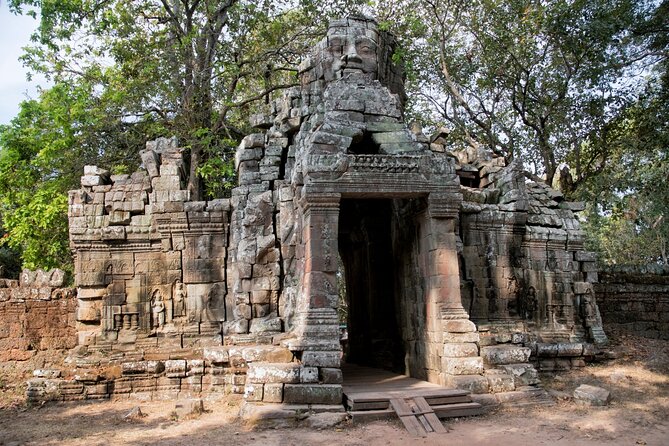
Bayon Temple, located within the Angkor Wat complex, mesmerizes visitors with its enigmatic stone faces that exude tranquility and mystery. This architectural marvel stands as a testament to the serene spirituality of the Khmer Empire, inviting contemplation and awe.
Here are some intriguing aspects that make Bayon Temple a must-visit destination:
-
Mysterious Smiling Faces: The numerous serene faces carved into the stones of the temple walls are a unique and captivating feature.
-
Intricate Bas-Reliefs: The detailed bas-reliefs depicting historical events and daily life offer a glimpse into the past.
-
Central Sanctuary: The sanctuary at the heart of the temple provides a sense of peace and tranquility amidst the bustling complex.
-
Symbolism and Architecture: The temple’s layout and design reflect a deep connection to spiritual beliefs, making it a fascinating exploration of ancient culture.
Ta Prohm: Nature’s Reclaim
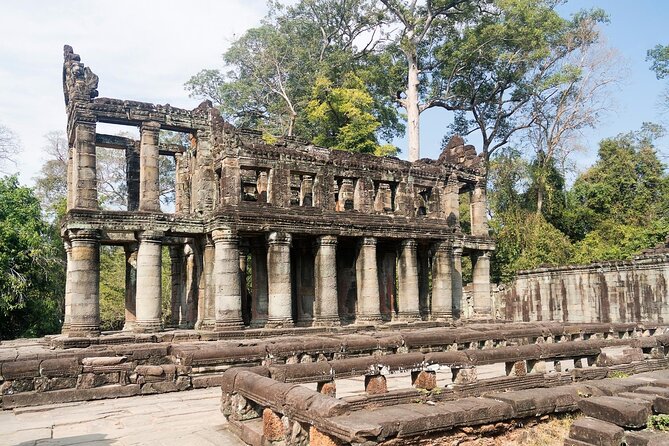
Nature has overtaken Ta Prohm in a stunning display of reclaiming ancient structures with its verdant embrace. The intertwining roots of massive trees envelop the temple, creating a mesmerizing scene where nature and architecture harmoniously coexist. This unique blend of nature’s beauty and architectural marvels draws visitors from around the world to witness the captivating sight of a temple being slowly consumed by the surrounding jungle.
| Nature’s Reclaim at Ta Prohm | ||
|---|---|---|
| Key Features | Description | Image |
| Overgrown trees and roots | Nature’s beauty intertwining with ancient ruins | |
| Crumbling stone structures | Architectural marvels overtaken by nature | |
| Serene atmosphere | Tranquil setting amidst the lush greenery |
Banteay Srei: Intricate Pink Sandstone
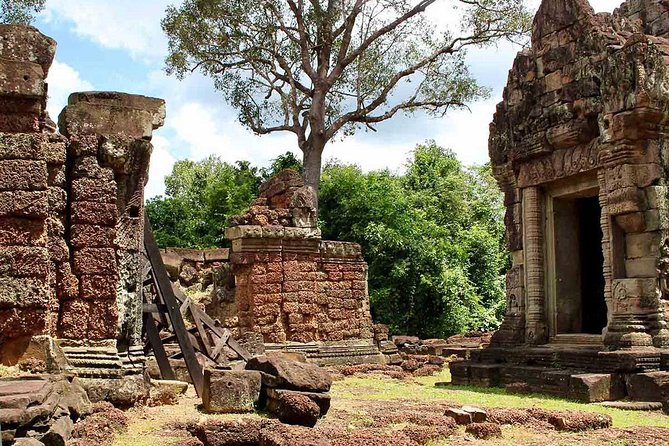
Intricately carved from pink sandstone, Banteay Srei stands out as a masterpiece of architectural artistry within the Angkor temple complex. This exquisite temple is renowned for its intricate carvings and delicate details, showcasing the exceptional craftsmanship of the Khmer Empire. Visitors are captivated by the pink sandstone’s unique hue, adding to the temple’s allure and beauty.
Here’s what makes Banteay Srei a must-see destination:
- Unmatched intricate carvings that adorn every surface
- The mesmerizing pink sandstone that sets this temple apart
- Detailed bas-reliefs depicting Hindu mythological scenes
- Small scale but impressive architecture that showcases Khmer artistry at its finest
Banteay Srei’s charm lies in its intricate beauty, making it a gem of Angkor that shouldn’t be missed.
Preah Khan: Historical Grandeur
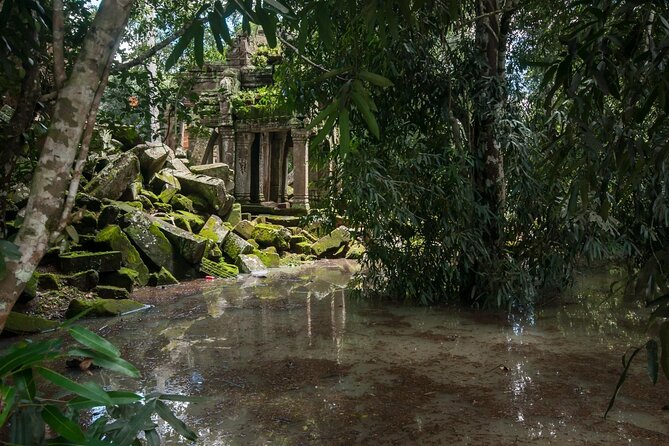
With its sprawling layout and rich historical significance, Preah Khan stands as a testament to the grandeur of the ancient Khmer civilization at Angkor.
This temple, built in the 12th century by King Jayavarman VII, served as a Buddhist university and a hub of religious activity. Its historical significance lies in its role as a center of learning and spiritual practice in the Khmer Empire.
Preah Khan’s architectural marvels include intricately carved stone structures, imposing gateways, and corridors adorned with bas-reliefs depicting scenes from Hindu mythology and daily life. The temple’s layout, with its maze-like design and hidden sanctuaries, adds to its allure and mystery.
Visitors can explore the corridors and courtyards, marveling at the craftsmanship and artistry that have stood the test of time.
Common questions
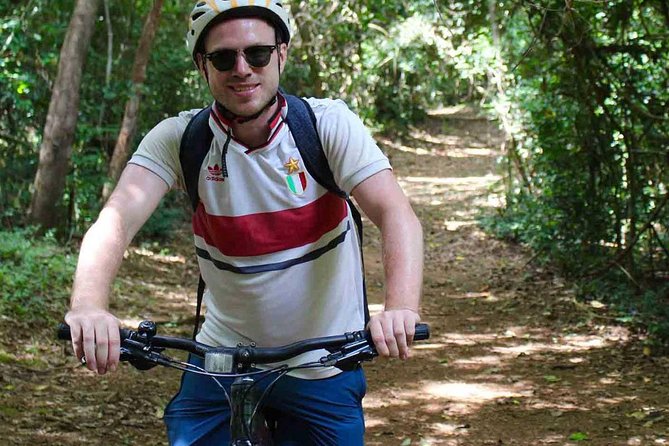
Are There Any Specific Dress Code Requirements for Visiting the Temples of Angkor?
When visiting temples, appropriate dress code is crucial. Temple decorum often requires modest clothing covering shoulders and knees. It’s respectful and helps maintain the sacredness of the site. Remember this when preparing for your temple visit.
Is There Any Specific Etiquette or Rules to Follow When Exploring the Temple Sites?
When exploring temple sites, visitors should adhere to proper behavior and cultural norms. Respectful photography and quiet contemplation are encouraged. It is essential to be mindful of the sacredness of the surroundings and show reverence.
Are There Any Recommended Local Eateries or Restaurants Near the Temple Complexes?
When exploring the area near the temple complexes, visitors can savor local delicacies at recommended eateries or from street vendors. These culinary gems offer a taste of authentic Cambodian flavors that enhance the temple trail experience.
What Is the Best Time of Day to Visit the Temples to Avoid Crowds?
The best time to visit the temples to avoid crowds is early morning or late afternoon. These times not only offer fewer visitors but also provide stunning photography spots and beautiful sunset views over the ancient ruins.
Are There Any Nearby Accommodations or Hotels That Offer Convenient Access to the Temple Sites?
Nearby accommodations offer easy access to temple sites for optimal temple photography and sunrise viewing. Convenient transportation services are available for visitors. Enjoy a seamless experience with close proximity to the historical wonders of Angkor.
Last Words
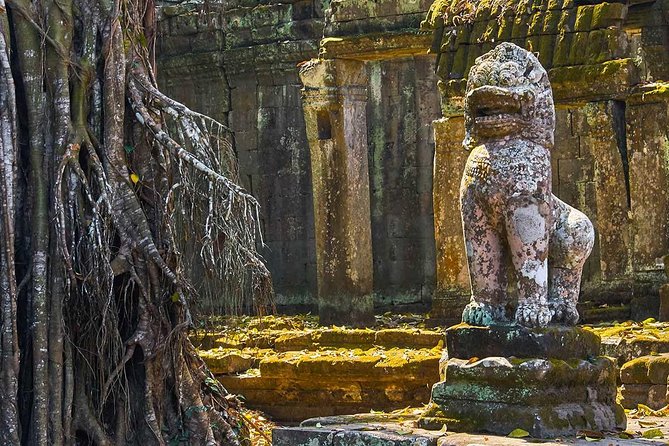
Set out on an unforgettable journey through the Temple Trails of Angkor and uncover the secrets of Cambodia’s ancient past. From the iconic Angkor Wat to the serene faces of Bayon Temple, each site holds a unique story waiting to be discovered.
Witness nature reclaiming Ta Prohm and marvel at the intricate beauty of Banteay Srei. Explore the historical grandeur of Preah Khan and learn about the mystical allure of these sacred sites.
The Temple Trails of Angkor await your exploration.